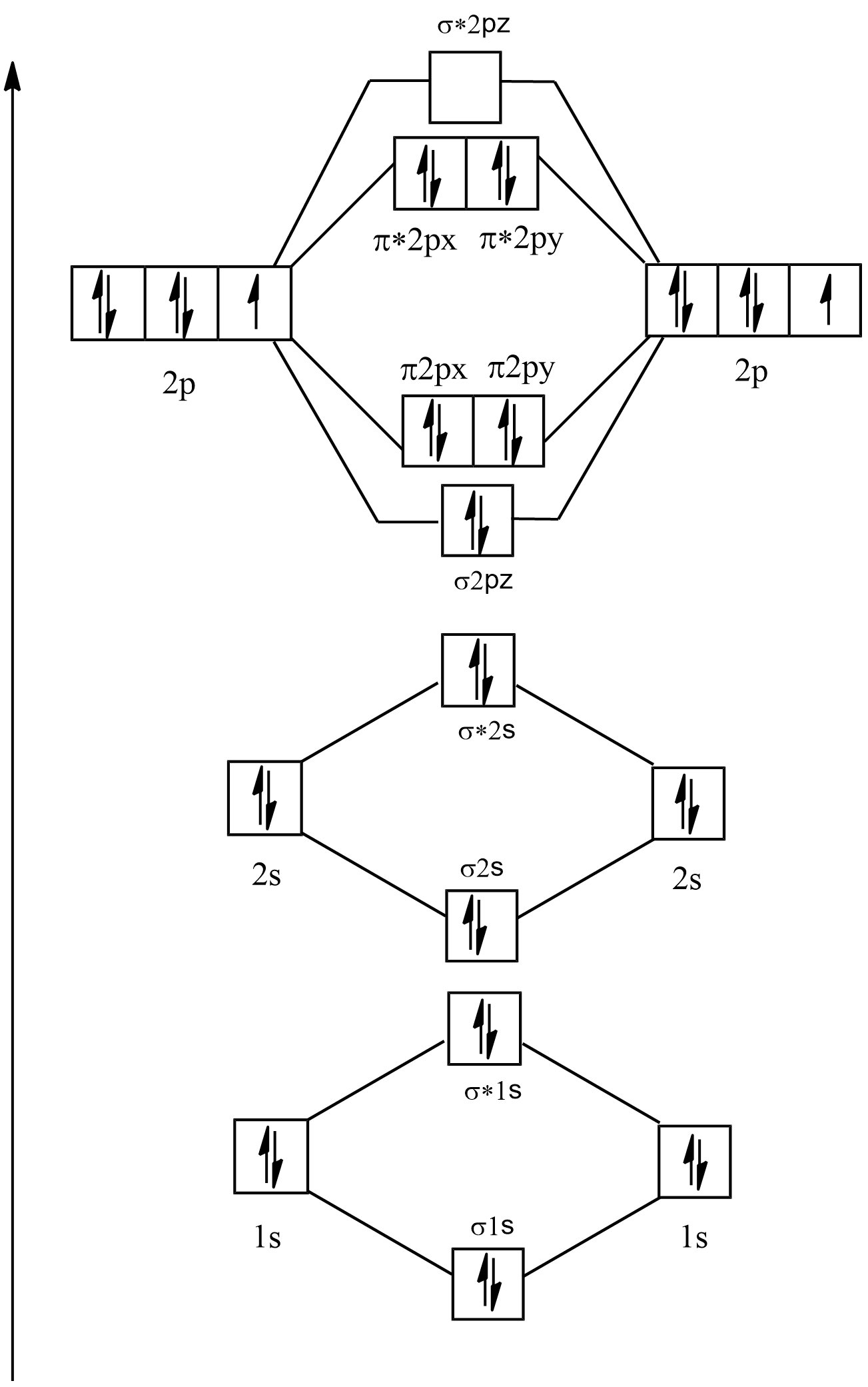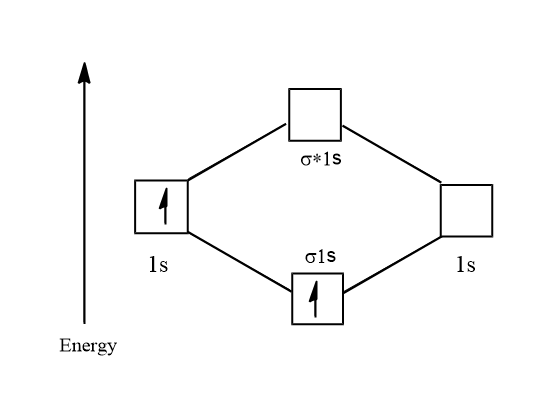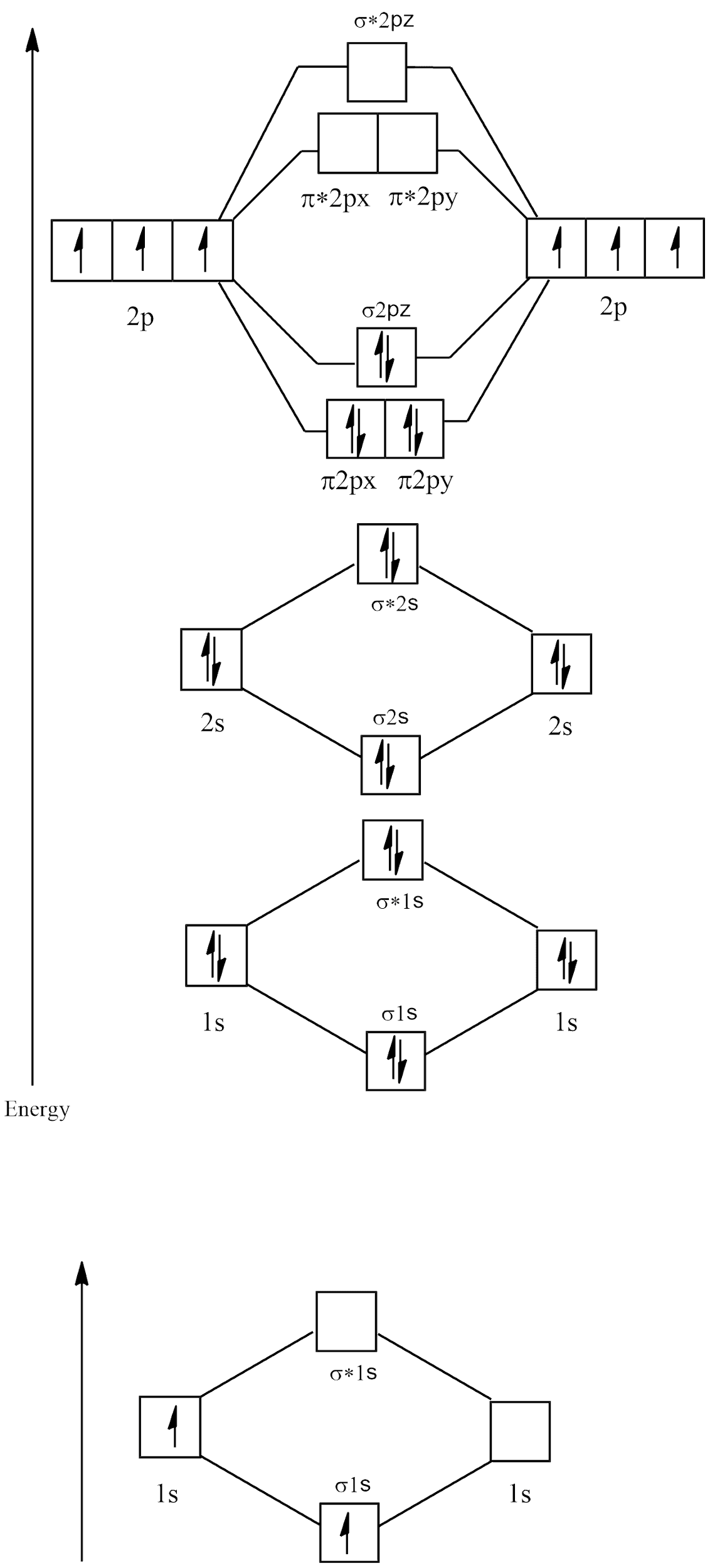
Which of the following is paramagnetic with bond order
Answer
405.9k+ views
Hint: For solving this question, one should have a better understanding of how to draw the molecular orbital diagram as when you draw the diagram it becomes easy to solve this question. After drawing the diagram use the formula
Complete answer:
For solving this question we need to use the molecular orbital theory (MOT). This theory uses a method for describing the electronic structure of molecules using quantum mechanics. For drawing the molecular orbital diagram we need to know the electronic configuration of each of the following. for finding the bond order we use the formula :
Electronic configuration of
Its molecular orbital diagram will be:

As it can be seen in
Electronic configuration of
Its molecular orbital diagram is:

Thus there is one unpaired electron and so
Electronic configuration of
Molecular orbital diagram

There are no unpaired electrons in
Electronic configuration of
Molecular orbital diagram

There are no unpaired electrons in
Thus, from the above data we can clearly see that only
Therefore the correct option is B.
Note:
While drawing the molecular orbital diagram for the elements above helium, the
Complete answer:
For solving this question we need to use the molecular orbital theory (MOT). This theory uses a method for describing the electronic structure of molecules using quantum mechanics. For drawing the molecular orbital diagram we need to know the electronic configuration of each of the following. for finding the bond order we use the formula :
Electronic configuration of
Its molecular orbital diagram will be:

As it can be seen in
Electronic configuration of
Its molecular orbital diagram is:

Thus there is one unpaired electron and so
Electronic configuration of
Molecular orbital diagram

There are no unpaired electrons in
Electronic configuration of
Molecular orbital diagram

There are no unpaired electrons in
Thus, from the above data we can clearly see that only
Therefore the correct option is B.
Note:
While drawing the molecular orbital diagram for the elements above helium, the
Recently Updated Pages
Master Class 11 Economics: Engaging Questions & Answers for Success

Master Class 11 Business Studies: Engaging Questions & Answers for Success

Master Class 11 Accountancy: Engaging Questions & Answers for Success

Master Class 11 English: Engaging Questions & Answers for Success

Master Class 11 Computer Science: Engaging Questions & Answers for Success

Master Class 11 Maths: Engaging Questions & Answers for Success

Trending doubts
State and prove Bernoullis theorem class 11 physics CBSE

1 ton equals to A 100 kg B 1000 kg C 10 kg D 10000 class 11 physics CBSE

State the laws of reflection of light

One Metric ton is equal to kg A 10000 B 1000 C 100 class 11 physics CBSE

1 Quintal is equal to a 110 kg b 10 kg c 100kg d 1000 class 11 physics CBSE

Difference Between Prokaryotic Cells and Eukaryotic Cells




